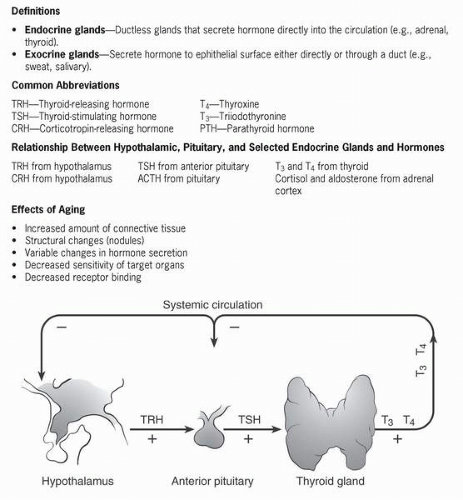Anatomy and Physiology of the Endocrine System
Hormones maintain and regulate body systems and act on specific target cells, regulating physiological function. They are secreted in any of three patterns—diurnal, pulsatile, or cyclical—or in patterns that are dependent on the levels of circulating substrates, such as electrolytes or minerals. Hormones bind onto specific receptor sites, not on cells or tissue. Generally, hormones are metabolized in the liver and excreted by the kidneys. Hormone release can be regulated by chemical factors, endocrine or hormonal factors, and/or neural factors. Feedback systems function to keep hormone levels within physiological ranges. The complexity of the feedback systems of the endocrine glands contributes to the difficulty in timely diagnosis of endocrine disorders. Any dysfunction of a particular gland causes decreased release of hormones that may produce adverse effects on specific body systems.
The negative feedback mechanism is the most common feedback system in hormonal regulation. For example, reduced levels of circulating thyroid hormone stimulate the release of thyroid-stimulating hormone (TSH) from the anterior pituitary, which in turn causes the thyroid gland to secrete additional thyroxine. Conversely, if circulating levels of thyroxine are too high, the anterior pituitary decreases production of TSH, thereby reducing the level of thyroid hormone in the blood. Positive feedback mechanisms are less common and occur when the release of hormone from the target organ stimulates the endocrine gland to secrete additional hormone.
Stay updated, free articles. Join our Telegram channel

Full access? Get Clinical Tree



